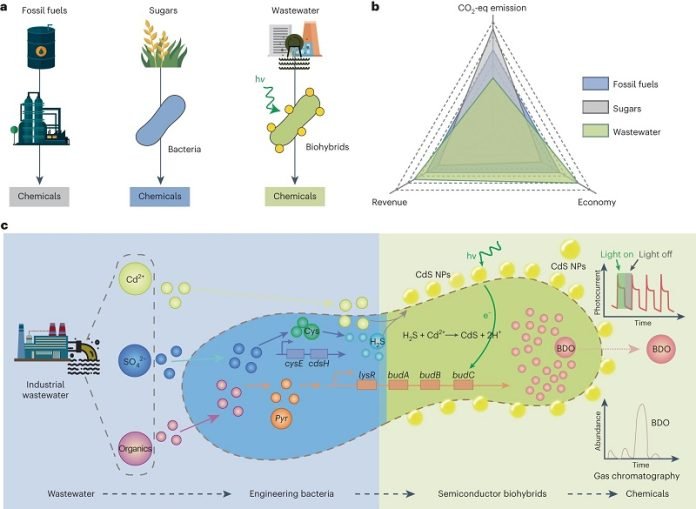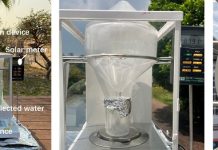
Sunlight powers our world, from giving energy to plants to providing warmth and light.
Now, researchers have found a new and exciting way to use sunlight: turning wastewater pollutants into useful chemicals!
What’s the Big Idea?
Scientists, led by Prof. Gao Xiang from the Shenzhen Institute of Advanced Technology and Prof. Lu Lu from the Harbin Institute of Technology, have developed a way to take contaminants from wastewater and convert them into valuable chemicals, all with the help of sunlight.
This discovery could be a game-changer, leading to a greener and more sustainable way of producing chemicals.
Traditional vs. New Method
Traditionally, making chemicals requires a lot of energy. A recent advancement is the use of semiconductor biohybrids. Think of them as a mix of light-absorbing materials and living cells. These biohybrids can use sunlight to help make chemicals. But there’s a problem: how can we make this method big enough, cost-effective, and green?
The solution? Start with wastewater. Instead of viewing wastewater as waste, these scientists saw it as a treasure trove of raw materials. The plan was to use things found in wastewater, like organic carbon, heavy metals, and sulfate compounds, and transform them into useful chemicals.
Why Wastewater?
Well, wastewater has its challenges. It’s not always the same and can contain a mix of pollutants that many bacteria don’t like. Plus, wastewater has a lot of salt and dissolved oxygen. So, the scientists needed a special kind of bacteria that could handle all this.
Enter Vibrio natriegens, a fast-growing marine bacterium. This little powerhouse can handle high salt levels and can eat various carbon sources. The researchers made a few tweaks to this bacterium to help it process different metals and carbon from wastewater.
How Does It Work?
The main chemical these researchers wanted to produce was 2,3-butanediol (BDO), a very useful chemical in many industries. To make BDO, they used their specially-engineered bacterium to create hydrogen sulfide. This hydrogen sulfide helped produce CdS nanoparticles, tiny particles that are fantastic at absorbing sunlight.
Here’s the exciting part: when these sunlight-absorbing nanoparticles combined with the bacteria, they formed the mentioned biohybrids. Even though the bacteria themselves can’t use light, these biohybrids could!
The result? When exposed to sunlight, these biohybrids could produce more BDO than using just the bacteria alone.
And it wasn’t just a small-scale experiment. They managed to produce BDO on a large 5-liter scale using real wastewater.
This method has many benefits. It’s more environmentally friendly and cheaper than traditional methods.
As Prof. Gao puts it, this process not only has a smaller carbon footprint but also costs less, making it better for our planet. Plus, these biohybrids can be made using various wastewater sources, making it very versatile.
Follow us on Twitter for more articles about this topic.



